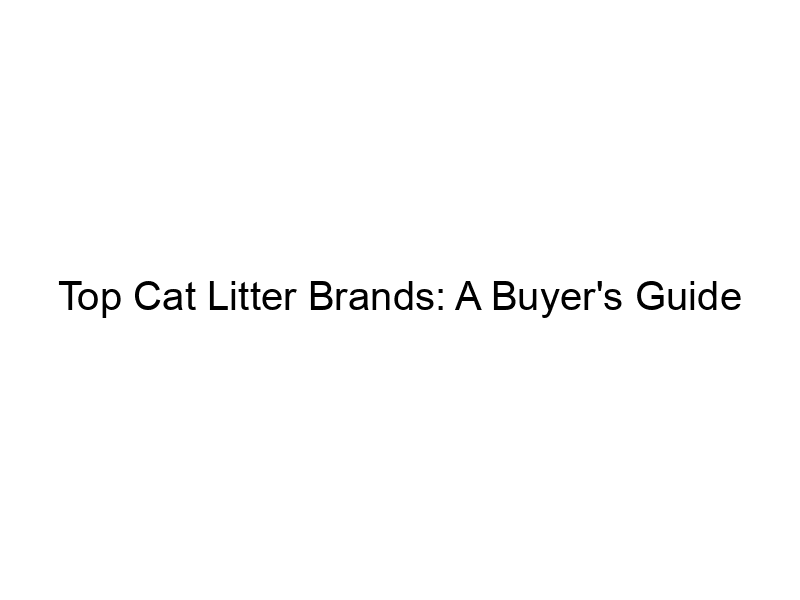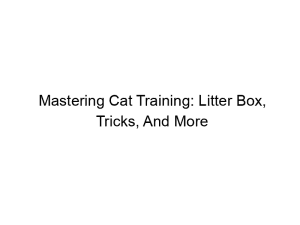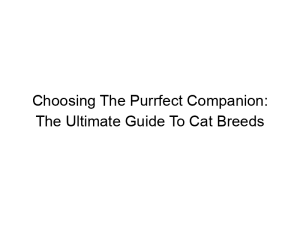Choosing the right cat litter can feel overwhelming with so many options available. This comprehensive guide, Top Cat Litter Brands: A Buyer’s Guide, will help you navigate the world of cat litter, understand the different types, and find the perfect fit for your feline friend and your lifestyle. We’ll cover everything from clumping and non-clumping options to eco-friendly choices and considerations for sensitive cats. You’ll learn about the key features to look for, the pros and cons of various brands, and how to make an informed decision based on your cat’s needs and your budget.
Clumping litter is the most popular choice, forming solid clumps when wet, making scooping easier and more hygienic. Non-clumping litter, often made from clay, absorbs moisture but doesn’t clump, requiring more frequent complete litter box changes.
Clay Litter: The
Traditional Choice
Clay litter is widely available, absorbent, and generally affordable. However, it can be dusty and less environmentally friendly than other options. There are variations like bentonite clay (which clumps well) and fuller’s earth (which is often a non-clumping option).
Silica Gel Litter: Super Absorbent and Low-Dust
Silica gel litter, made from crystals, is known for its exceptional absorbency and low dust. It’s more expensive than clay but lasts longer, making it cost-effective in the long run. It’s also generally favored for its odor control.
Wood Litter: A Natural and Eco-Friendly Option
Wood litter, often made from pine or recycled wood, is a biodegradable and environmentally friendly alternative to clay. It’s usually less dusty than clay, but it may not clump as well and can be less effective at odor control. Pine litter can also be a slight irritant for some cats.
Plant-Based Litters: Corn, Wheat, Paper
Many plant-based litters are compostable and biodegradable, promoting sustainability. However, they may not be as absorbent as clay or silica gel, and some cats might not take to their texture as readily.
Naturally Scented vs. Unscented
Many brands offer scented litter claiming to neutralize odor. However, artificial fragrances can be irritating to cats and can trigger respiratory problems. Unscented litters are safer and preferable.
Top Cat Litter Brands: A Comparative Review
World’s Best Cat Litter
Known for its plant-based, naturally-scented formula and clumping ability, World’s Best is a popular choice among environmentally conscious cat owners. It’s made from corn and is highly absorbent and effective at odor control. It’s generally a bit more expensive than traditional clay litters.
Tidy Cats
Tidy Cats offers a wide range of litters, including clumping clay, non-clumping clay, and scented and unscented options. They are a budget-friendly choice and widely available. However, some users complain about dust.
Fresh Step
Fresh Step is renowned for its excellent odor control. Many of their products use advanced odor-eliminating technology. However, some formulations contain perfumes which can irritate sensitive cats. They offer a variety of types, including clumping clay, crystal, and scoopable versions.
Purina Tidy Cats Breeze
Purina Tidy Cats Breeze is a unique system that uses a ventilated litter box and a special litter designed to work with the system for odor control. While it’s more expensive than standard litter, it promises superior odor control and minimal cleanup. The system itself may not be suitable for all homes or cats.
Dr. Elsey’s Cat Litter
Dr. Elsey’s offers several excellent clumping litters, often chosen for their superior odor control and dust-free nature. It is usually favored by owners of cats with sensitive respiratory systems or allergies. It tends to be priced at the higher end of the spectrum.
Arm & Hammer
Arm & Hammer is a well-known brand that leverages baking soda’s odor-absorbing properties in their litter. It’s a budget-friendly choice, particularly effective at neutralizing odors. However, some cats might find the baking soda texture unpleasant.
Choosing the Right Litter for Your Cat
Consider Your Cat’s Preferences
Some cats are more particular than others. Some might prefer the feel of a certain litter, while others might have allergies or sensitivities. Start with a smaller bag of a new litter to gauge your cat’s reaction.
Your Lifestyle and Budget
Clumping litter is easier to scoop and more hygienic, and silica gel litter lasts longer but costs more. Consider how often you can clean the litter box when selecting the right litter for your lifestyle and budget.
Environmental Considerations
Choose eco-friendly options like wood, plant-based, or recycled litters if you’re looking for a sustainable choice. Be mindful of the overall packaging and its effect on the environment.
Litter Box Size and Type
The size and type of your litter box influence the amount of litter you’ll need and whether certain litters would be suitable. Some litters work better in certain litter boxes.
Health Concerns
If your cat has allergies or respiratory issues, consider dust-free or low-dust options. Avoid scented litters, as the fragrances can be irritating and trigger allergic reactions.
FAQ: Frequently Asked Questions
What are the benefits of clumping litter?
Clumping litter makes cleaning the litter box much easier, reducing the amount of litter you need to replace. The clumps seal in odor and bacteria, promoting hygiene.
How often should I change my cat’s litter?
For clumping litter, you should scoop daily and completely change the litter box once or twice a week depending on the number of cats and litter type. Non-clumping litter needs more frequent complete changes—daily or every other day.
Is silica gel litter safe for cats?
Yes, silica gel litter is generally safe for cats if ingested accidentally in small quantities. However, avoid litters with added fragrances or chemicals. Large ingestion should be cause for veterinary concern.
What should I do if my cat refuses to use the new litter?
Gradually transition to the new litter by mixing the new litter with the old litter, gradually increasing the proportion of the new litter until your cat is completely accustomed to the change.
What is the best litter for odor control?
Silica gel litters and those containing baking soda offer excellent odor control. However, clumping clay litters are also effective in this respect when changed regularly.
Are there any litters suitable for kittens?
Yes, many litters are safe for kittens. Opt for fine-grained, dust-free options that are gentle on their delicate paws.
How do I dispose of used cat litter responsibly?
Check your local regulations. Some communities allow used cat litter to go down the toilet, while others require disposal in the trash. Always check the packaging for manufacturer guidance.
Final Thoughts
Choosing the right cat litter involves careful consideration of your cat’s individual needs, your budget, and your environmental concerns. By understanding the various types of litter and their pros and cons, you can make an informed decision that benefits both your feline friend and your home. This guide has explored a range of popular brands, highlighted essential features, and provided helpful tips for making the best choice for you and your furry companion. Remember to observe your cat’s reaction to any new litter and adjust your choice accordingly. With a little research and attention to detail, finding the perfect cat litter is achievable, leading to a cleaner, happier home and a more comfortable cat.




